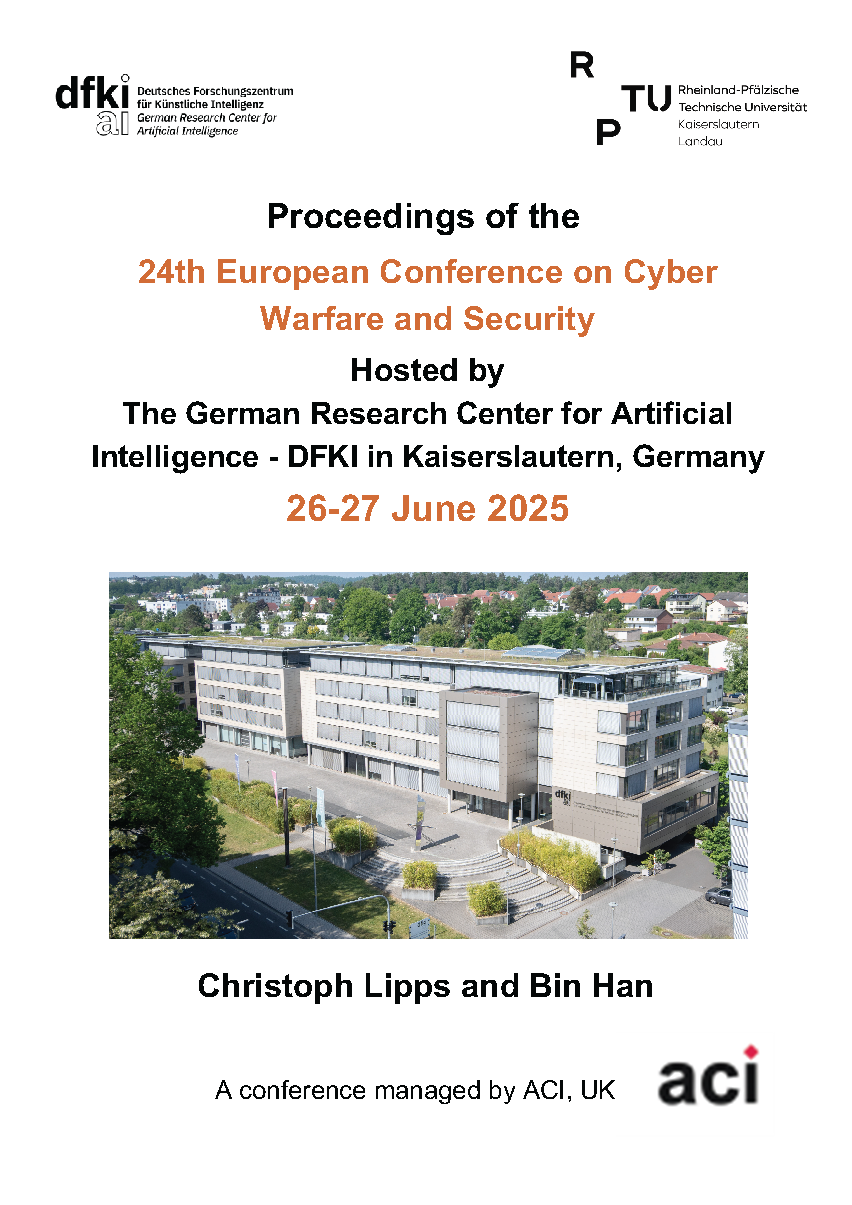Evolving Advanced Persistent Threats (APTs) and Strengthening Global Cybersecurity Coordination
DOI:
https://doi.org/10.34190/eccws.24.1.3406Keywords:
Advanced Persistent Threats (APT), Global Cybersecurity Coordination, Threat Intelligence, Public- Private Partnerships, Regulatory HarmonizationAbstract
Advanced Persistent Threats (APTs) represent a sophisticated category of cyber threats that pose significant challenges to global security and stability. These threats are characterized by their stealth, persistence, and strategic focus, often orchestrated by state-sponsored entities or highly organized criminal groups. Their primary objectives are to infiltrate networks, exfiltrate sensitive data, and establish a persistent presence within critical systems, posing severe risks to national security, economic interests, and critical infrastructure. This study engages with the complexities of international cybersecurity efforts to combat APTs, drawing on insights from 19 cybersecurity experts across diverse sectors and regions. The research identifies several key barriers that hinder effective global collaboration in this realm. Among these are inconsistent regulatory frameworks that vary significantly across jurisdictions, trust deficits among international partners, and the technical limitations prevalent in emerging economies.
The findings underscore the importance of harmonizing legal frameworks and advocate for the standardization of cyber threat intelligence sharing protocols to enhance global cybersecurity postures. Successful strategies highlighted include the establishment of adaptive response mechanisms and robust public-private partnerships that leverage both governmental oversight and private-sector innovation.
Moreover, the study emphasizes that strengthening global coordination requires not only technological advancements but also trust-building and cooperative frameworks that transcend national boundaries. The paper suggests actionable strategies to bolster international cooperation, which includes enhancing the capacity for threat intelligence sharing and promoting regulatory harmonization.
In conclusion, this research illustrates that while the challenges are formidable, the strategic alignment of international policies and practices is crucial for an effective defense against APTs. The collaborative approaches detailed herein demonstrate potential pathways for achieving more resilient global cybersecurity infrastructure.
Downloads
Published
Issue
Section
License
Copyright (c) 2025 European Conference on Cyber Warfare and Security

This work is licensed under a Creative Commons Attribution-NonCommercial-NoDerivatives 4.0 International License.





